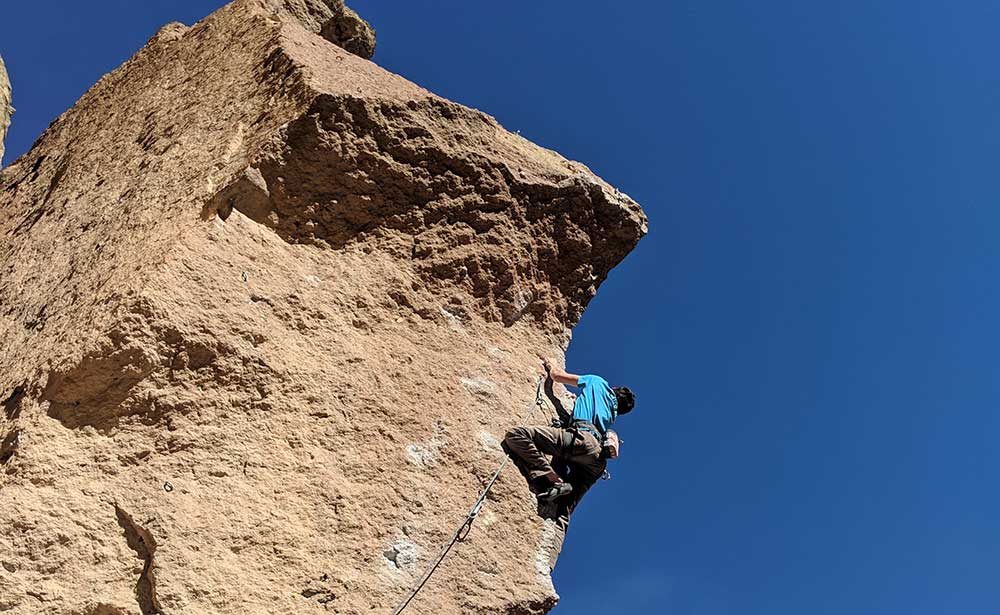
4 Mental Skills You Can Learn from Elite Rock Climbers
Rock climbers are the objects of perennial fascination. Ground-dwelling humans flock to theaters to see the death-defying feats of elite climbers. Hikers crane their necks to observe the miniature people on the cliffs high above the trail. Researchers also enjoy shoving surveys at climbers; perhaps because they seem to be a people cut from different cloth. Published studies have examined virtually every aspect of climbers: their body mass index, their perceptions of risk, and even their vacation choices. Perhaps no set of findings is more applicable to the rest of us than those related to the mental strategies that climbers commonly employ.
To better understand how climbers think, it might be helpful to understand how climbing works. Climbers do not just randomly clamber up rock faces. They carefully choose routes that are suited to their unique skill level and climbing style. Each route presents a number of challenges that might be largely invisible to non-climbers: there is the problem of route-finding in which climbers have to pick and choose from among a number of possible hand and footholds, there is the toughest part of the climb (called the “crux”) that may involve effortful or tricky sequences of movement, and there is the overall endurance challenge presented by tall climbs.
In one study, researchers interviewed elite climbers—you know, people who might consider a ledge that is as wide as the edge of a coin to be a usable hand hold—to see what psychological factors were associated with climbing success. The climbers in their study engaged in 4 distinct mental practices that have relevance to careers as they do to crags. Unlike typical “success hacks” they were more exciting than “work hard” or “get organized.” They include:
Post quick links:
Previewing
Cliffs are permanent and so climbers have an opportunity to go and take a look at them before attempting to scale them. This is known as “previewing” a climb. It gives climbers a sense of the scope, scale and difficulty of their intended undertaking. In the non-climbing world, people can also preview challenges. For example, public speakers sometimes stand on stage in an empty auditorium so that they can better imagine the high-stakes presentation they will give the following day. Similarly, lawyers sometimes engage in mock trials so that they can preview the types of procedural issues they will face when their court date finally arrives. Anything that helps you see your upcoming challenge as clearly and accurately as possible counts as a preview and can boost both your confidence and readiness.
Social Processing
This might sound surprising for such an individualistic pursuit but elite climbers engage in a lot of socializing in anticipation of their climb. That’s right; they discuss the climb with other people who have experience with it or who might otherwise be able to offer advice or support. Two elite climbers can look at a point high above and talk about whether it makes more sense to reach up with a left or a right hand at that spot. Similarly, there is often little need to start from scratch when the world is full of people who have skill and experience that might soften forthcoming challenges. This kind of social processing is especially helpful when a person needs orientation to a challenge. For example, engaged couples who seek out the advice of long-married couples or new hires who seek out mentorship.
Crux Focus
When elite climbers consider the challenge before them, they tend to focus narrowly on the part that deserves the lion’s share of their attention: the crux. The crux is the hardest part of the climb. Rather than fretting about every move they isolate their concern to the one or two challenges that actually ought to concern them. This is a terrific reminder for people who tend to clump together challenges as a unified whole. Making a monthly sales quota or getting a Master’s Degree or starting a new business are monumental challenges. They are also full of specific tasks that are fun, straightforward, and not overly bothersome. By parsing apart the difficult from the easy, people can boost their optimism and enjoyment of challenges.
Mental Balance
Challenges are like heavy gravity for our attention. When you are faced with a difficult task it can occupy your mind. Elite climbers are able to side-step this by balancing their focus between the challenge and themselves. One part of their attention is directed inward on the habits and resources that will enhance their performance. For climbers, this can include fitness, sleep, and healthful eating. For non-climbers it can include those very same behaviors but also encompass organization, creativity, curiosity, or other strengths. This attention to developing personal resources can make challenges seem smaller by making the person feel bigger.



